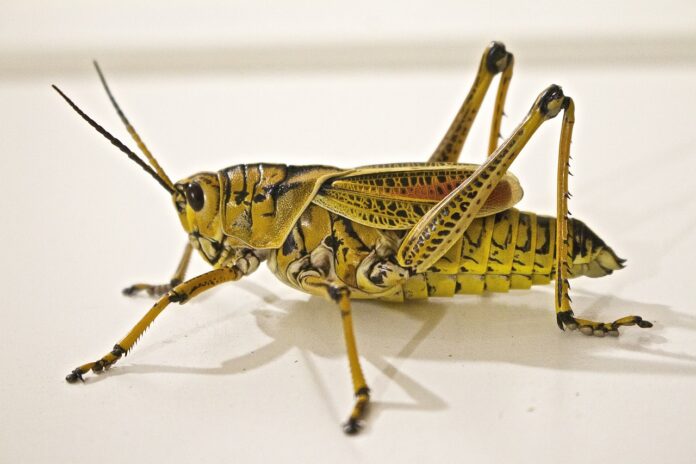Swarms of locusts can still pose a serious threat to agriculture today. These insects are incredibly voracious, and their massive swarms can devastate entire fields in just a few hours. Combating this menace is extremely challenging, and an invasion of these large grasshopper relatives can spell disaster for an entire region.
Facts About Locusts:
- A single swarm of locusts can consist of approximately 50-60 billion individuals. Such a swarm consumes about 200,000 tons of plant food in one day, which is equal to its own mass.
- Locusts have unique musical abilities. Male locusts can produce up to four different “songs” using their hind legs to attract a mate.
- In ancient times, these insects were a major threat to cultivated crops.
- The word “locust” has Turkic origins and translates to “yellow.”
- There are over 10,000 species of locusts worldwide. These voracious insects are considered the largest plant pests.
- Locusts can be found on every continent except Antarctica.
- Individuals born in conditions of overcrowding and limited food supply transform into what is known as the gregarious form. They develop wings and begin migrating, devouring everything in their path.
- Locust swarms can fly at speeds of up to 15-16 km/h, covering hundreds of kilometers.
- Some species of locusts prefer to settle in areas with dense grassy growth near bodies of water, while others inhabit desert and semi-desert regions among rocky outcrops with sparse shrubs and grass.
- In 1875, the most terrifying locust invasion in human history was recorded in the United States. Massive swarms of insects suddenly appeared in Texas and headed west, causing incredible devastation before mysteriously disappearing.
- When locusts gather in large numbers, their bodies come into contact with each other for extended periods. Prolonged friction on a specific spot on the insect’s leg sends a signal to its brain: “There are too many individuals in one place, food will soon run out, so it’s time to form a swarm and migrate in search of new food.”
- The first mention of locusts can be found in Sumerian chronicles written about 8,000 years ago.
- There are about 600 different species of locusts in Russia.
- A locust swarm can sometimes travel 200-300 km without landing or resting.
- Locusts use color to find food. Green means edible. In one experiment, locusts were placed in an enclosed space, and after all the green food was eaten, the insects attempted to eat their green counterparts.
- Locusts can also move on foot, with a swarm covering up to 15-20 kilometers in a day.
- The sound of locust wings rubbing together produces a creaky noise. The noise made by a large swarm is reminiscent of thunder.
- In some countries, locusts are eaten and even preserved for future consumption. They are considered a dietary food with no fat and high protein content.
- In 1988, scientists documented a locust swarm migrating from Africa to the Caribbean islands.
- Some species of locusts have gone extinct in the past few centuries.
- The Nikon Chronicle mentions that locusts invaded Russia in 1008, leading to a severe famine.
- The color of locusts depends not on genes but on the environment. Even individuals from the same brood, raised in different conditions, will have different colors.
- Solitary locusts that lead a sedentary lifestyle do not have a large appetite and eat moderately. A single locust can consume only 300 grams of plant food in its lifetime.
- A female locust lays eggs in loose, moist soil. This usually happens in the spring when the soil is sufficiently warmed. A female can lay up to 400 eggs in her lifetime.
- A locust swarm can cover an area exceeding 1,000 square kilometers, which is larger than the area of some countries.
- In tropical regions, locusts breed year-round, while in temperate climates, they breed only in summer.
- After laying fertilized eggs in the soil, adult locusts die.
- The development of locusts occurs rapidly. Within just 40 days, going through several molts, a nymph becomes an adult insect with wings, capable of producing offspring. In warm regions, development takes only two weeks and continues without a break for hibernation.
- Cannibalism is common among locusts. During long migrations, locust swarms consume weakened individuals.
